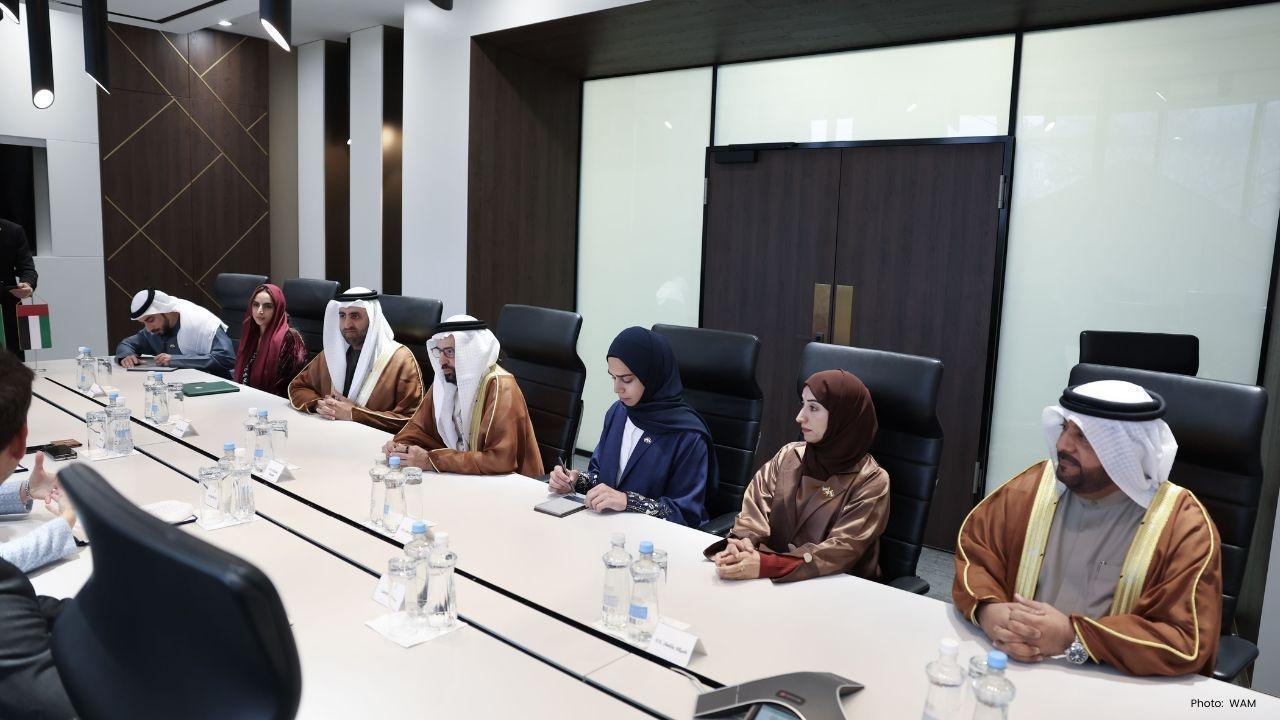
Join 10k+ people to get notified about new posts, news and tips.
Do not worry we don't spam!

Post by : Anis Farhan
The landscape of developer tools is evolving rapidly. Instead of just minor updates, we’re now witnessing significant launches of entirely new platforms that aim to boost AI-driven development, bridge the gap between design and coding, and enable creators with less technical expertise to deploy advanced applications. Recent months have brought forth numerous major releases, marking a shift from “AI-assisted coding” to “AI-native development platforms.”
This wave of innovation presents both opportunities and challenges for developers and product teams. Embracing the right tools early can serve as a critical competitive advantage, while falling behind could lead to increased technical debt and missed opportunities. Below, we delve into some of the most significant new tools, including how they can reshape development processes and what organizations need to consider in order to stay ahead.
One of the most significant trends is the advent of AI-first integrated development environments (IDEs). Traditional IDEs focus on tasks such as code editing and bug fixing. However, these new systems incorporate autonomous or semi-autonomous agents that write code, manage workflows, fix bugs, and execute repetitive tasks.
For instance, a leading vendor has introduced a tool that treats AI agents as junior developers: setting objectives, the agent takes necessary actions, creates code, runs tests, and presents results. This redefines the role of AI from a writing assistant to an executor of tasks that allows developers to focus on optimizing and validating.
A growing number of platforms now enable individuals with minimal programming experience to create complex multi-agent workflows, link APIs, and deploy applications visually. These no-code and low-code solutions eliminate traditional barriers, expanding the pool of potential creators for intelligent applications.
What's new includes:
Drag-and-drop functionalities for workflows and integrations
Preconfigured connectors for common services like databases and APIs
Visual monitoring, debugging, and deployment features
Emphasis on orchestrating multi-agent systems rather than focusing solely on single models
This trend demonstrates the advancement in agent-based development, moving from simple chatbot creations to intelligent systems composed of multiple specialized agents communicating, handing off tasks, and executing operations.
Another category of newly introduced tools closes the gap between UX/UI design and engineering. These tools allow teams to describe interfaces in natural language, automatically generating UI components and corresponding frontend code (CSS/HTML) as well as design assets. This streamlines the entire design, prototyping, and deployment processes.
For example, a new platform lets creators describe a mobile interface using plain language or upload an image, automatically generating a working prototype complete with frontend code and design tokens. This enhances collaboration between designers and developers and accelerates the implementation of MVPs.
Open-source models and developer APIs are another key feature of this recent wave of releases. These include large language models (LLMs), code-generation tools, and frameworks for model fine-tuning. Developers can now embed powerful models into their applications or tailor models for specific domains, empowering a broader range of organizations than ever before.
These open-source tools democratize access to advanced functionalities while reducing vendor dependency, enabling greater experimentation, customization, and control over data.
With the introduction of AI-first and no-code platforms, development teams can achieve faster feature creation and workflow design. This minimizes iteration periods and shortens the time to market.
Non-engineers, including designers and product managers, can now contribute to intelligent applications' development, reducing reliance on specialized engineers and broadening participation.
By connecting design and development, these tools facilitate more effective workflows, decreasing friction and preventing misalignments. For example, prototypes generated directly from design specifications minimize errors and speed up iterations.
Multi-agent and API-centric platforms allow for the development of modular architectures that promise agility, maintainability, and future readiness.
Open-source models and developer APIs provide development teams with greater control, enabling them to tailor solutions to their needs and mitigate vendor risks.
With a plethora of tools entering the market, not every solution will meet every team's requirements. Here are essential criteria for selecting new developer platforms:
Verify that the tool integrates seamlessly into your existing workflow, considering tools like code repositories and CI/CD services.
Evaluate the level of autonomy attributed to the AI agents, their transparency, and the required human oversight for effective operations.
For advanced applications, assess the tool's capability to manage multiple agents and visualize workflows, among other functionalities.
When bridging design and development, ensure the generated code aligns with design specifications and remains manageable for engineers.
Understand the terms related to data usage and hosting when using open-source models to inform your long-term strategies.
Assess pricing models, performance at scale, and support for essential enterprise functionalities such as security protocols.
Make sure that there is comprehensive documentation and an active community to assist in adoption and troubleshooting.
Consider the following steps when integrating new developer tools within your team:
Pilot Testing
Choose a small project or feature for initial testing.
Capture feedback throughout the testing process to refine functionality and ease of use.
Assess integration with current systems and workflows.
Governance and Training
Establish guidelines for tool usage and workflows.
Educate team members on tool functionalities.
Set measurable performance metrics.
Scale Implementation
Extend tool usage to additional projects and larger teams.
Implement monitoring to optimize performance and quality.
Develop shared resources and templates.
Continuous Review
After several months, evaluate the overall performance against set metrics, determining ROI.
Consider deeper customizations to improve output.
Phase out older tools as needed.
While the introduction of new tools brings immense potential, they also come with risks that teams should proactively manage:
Over-reliance without sufficient oversight can lead to challenges in code clarity and maintainability. Leverage human-in-the-loop strategies to validate AI output.
Ensure that automatically generated code adheres to your organization’s quality standards for clarity and testing.
AI tools may present security vulnerabilities. Include AI-generated code in your security assessments and audits.
Choosing proprietary platforms that lack interoperability could lead to long-term issues. Favor tools with flexible standards.
A heavy reliance on no-code solutions could erode technical expertise. It’s essential to promote learning and use such tools wisely.
The recent surge in developer tools marks a significant shift, signaling more changes are on the horizon, such as:
More autonomous workflows across design, coding, and deployment.
Increased usage of modular libraries and marketplaces.
Hybrid solutions integrating UI development, backend coding, and deployment processes.
A rise in open-source, model-tuned resources for specific applications.
Enhanced governance frameworks for ethical AI practices.
Industry-tailored templates speeding up time-to-market.
In essence, software development is becoming increasingly accessible and expedient. The early adopters of these trends will define the future landscape, while those who lag may find themselves facing escalating operational challenges.
The introduction of these developer tools—from AI-first IDEs to no-code platforms—is reshaping the fundamentals of software development. These innovations lower barriers, encourage broader participation, enhance efficiency, and unlock new creative avenues. For teams across the board, staying ahead in this rapidly changing landscape means cautiously evaluating and adopting these emerging tools.
As the field evolves swiftly, this year's launches are not mere incremental updates; they represent a transformative phase where AI plays an essential role in software creation. Now is the time to adapt.
This article provides information and educational insights and does not serve as professional advice. Tool availability and performance may alter based on region and organizational context. Readers should assess tools in line with their technical requirements and business strategies.










Anwar Ibrahim Pledges Comprehensive Probe into FIFA Football Player Bans
Anwar Ibrahim commits to a thorough investigation into FIFA's suspension of seven players, ensuring

Kagiso Rabada To Miss Final Test Against India
Kagiso Rabada is sidelined for the second Test and upcoming matches against India due to a rib injur

Rishabh Pant Takes Charge as Shubman Gill Bows Out of Second Test
Shubman Gill is sidelined for the upcoming Test in Guwahati due to a neck injury, with Rishabh Pant

Starc's Bowling Blitz Leaves England Reeling on Opening Day in Perth
Mitchell Starc took 7 wickets as England faltered on Day One in Perth, with Australia trailing by 49

Kazuma Okamoto and Kona Takahashi Join MLB Posting System
Kazuma Okamoto and Kona Takahashi enter the MLB posting system, providing a chance for teams to sign

Texans Triumph Over Bills 23-19 with Stellar Defensive Play
In a gripping encounter, Texans claimed a 23-19 victory against the Bills, fueled by Davis Mills' to